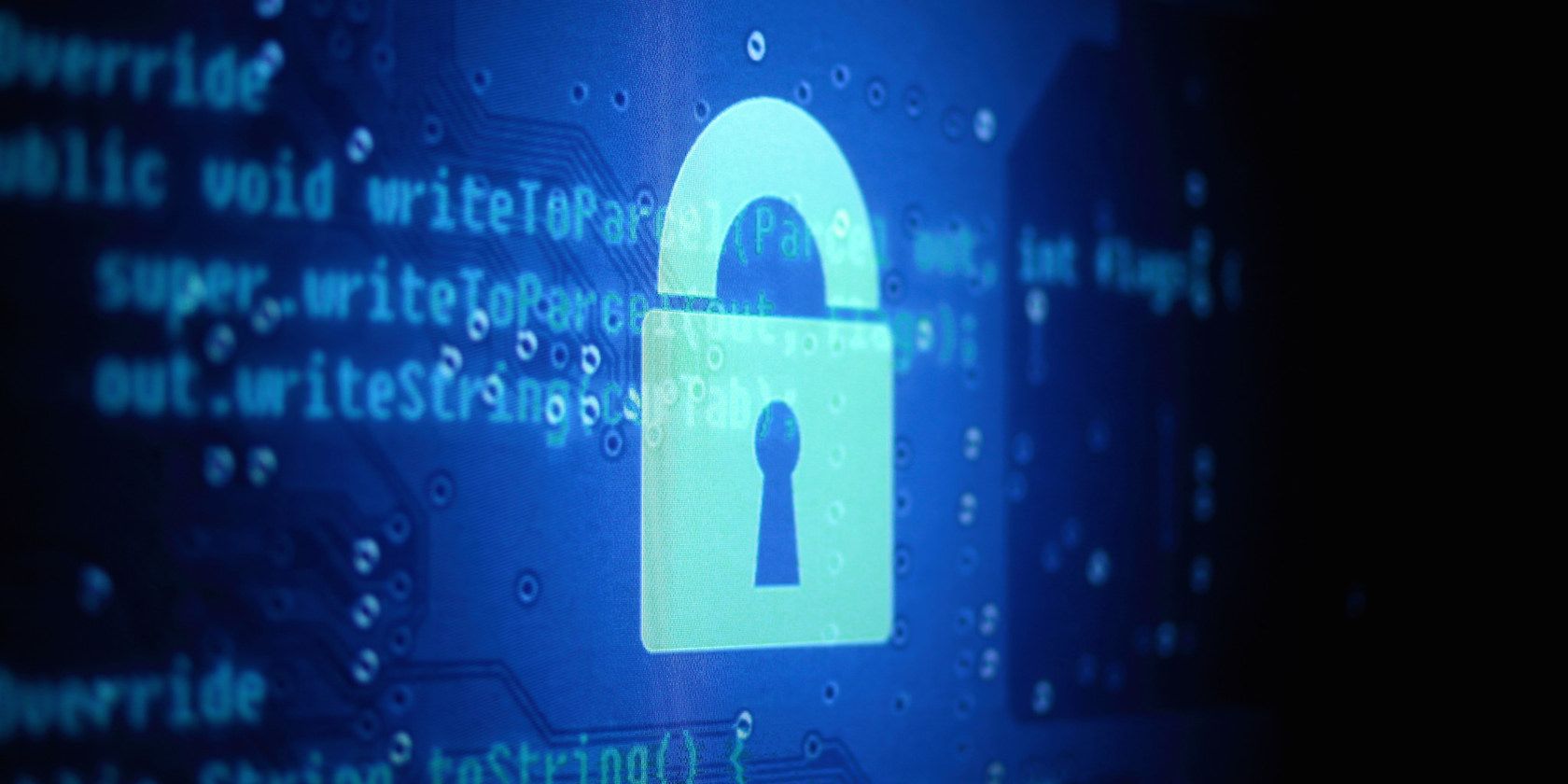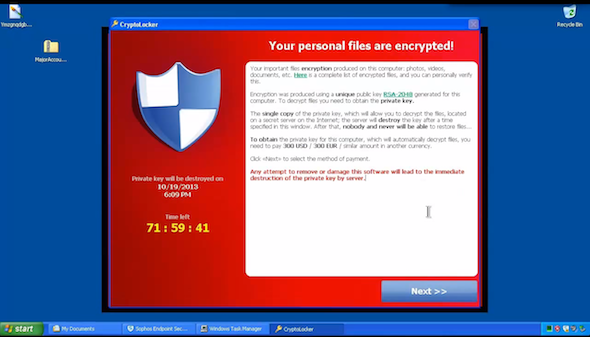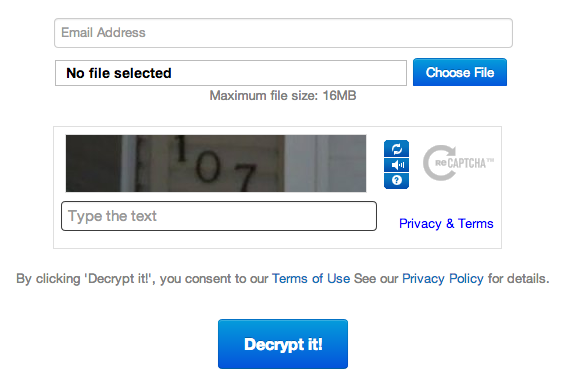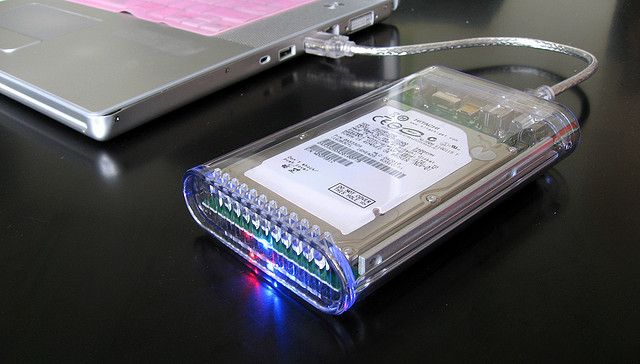Good news for anyone affected by Cryptolocker. IT security firms FireEye and Fox-IT have launched a long-awaited service to decrypt files held hostage by the notorious ransomware.
This comes shortly after researchers working for Kyrus Technology released a blog post detailing how CryptoLocker works, as well as how they reverse engineered it to acquire the private key used to encrypt hundreds of thousands of files.
The CryptoLocker trojan was first discovered by Dell SecureWorks last September. It works by encrypting files that have specific file extensions, and only decrypting them once a ransom of $300 had been paid.
Although the network that served the Trojan was eventually taken down, thousands of users remain separated from their files. Until now.
Have you been hit by Cryptolocker? Want to know how you can get your files back? Read on for more info.
Cryptolocker: Let's Recap
When Cryptolocker first burst on the scene, I described it as the 'nastiest malware ever'. I'm going to stand by that statement. Once it gets its hands on your system, it'll seize your files with near-unbreakable encryption and charge you a small fortune in Bitcoin to get them back.
It didn't just attack local hard drives, either. If there was an external hard drive or a mapped network drive connected to an infected computer, it too would be attacked. This caused havoc in businesses where employees often collaborate and share documents on network attached storage drives.
The virulent spread of CryptoLocker was also something to behold, as was the phenomenal amount of money it pulled in. Estimates range from $3m to a staggering $27m, as victims paid the ransom that was demanded en-masse, eager to get their files back.
Not long after, the servers used to serve and control the Cryptolocker malware were taken down in 'Operational Tovar', and a database of victims was recovered. This was the combined efforts of police forces from multiple countries, including the US, the UK, and most European countries, and saw the ringleader of the gang behind the malware indicted by the FBI.
Which brings us to today. CryptoLocker is officially dead and buried, although many people are unable to get access to their seized files, especially after the payment and control servers were taken down as part of Operation Server.
But there's still hope. Here's how CryptoLocker was reversed, and how you can get your files back.
How Cryptolocker Was Reversed
After Kyrus Technologies reverse engineered CryptoLocker, the next thing they did was to develop a decryption engine.
Files encrypted with the CryptoLocker malware follow a specific format. Each encrypted file is done with an AES-256 key that is unique to that particular file. This encryption key is then subsequently encrypted with a public/private key pair, using a stronger near-impervious RSA-2048 algorithm.
The public key generated is unique to your computer, not the encrypted file. This information, in conjunction with an understanding of the file format used to store encrypted files meant that Kyrus Technologies were able to create an effective decryption tool.
But there was one problem. Although there was a tool to decrypt files, it was useless without the private encryption keys. As a result, the only way to unlock a file encrypted with CryptoLocker was with the private key.
Thankfully, FireEye and Fox-IT has acquired a significant proportion of the Cryptolocker private keys. Details about how they managed this are thin on the ground; they simply say they got them through 'various partnerships and reverse engineering engagements'.
This library of private keys and the decryption program created by Kyrus Technologies means that victims of CryptoLocker now have a way to get their files back, and at no cost to them. But how do you use it?
Decrypting A CryptoLocker Infected Hard Drive
First, browse to decryptcryptolocker.com. You're going to need a sample file that has been encrypted with the Cryptolocker malware to hand.
Then, upload it to the DecryptCryptoLocker website. This will be then be processed, and (hopefully) return the private key associated with the file which will then be emailed to you.
Then, it's a matter of downloading and running a small executable. This runs on the command line, and requires that you specify the files you wish to decrypt, as well as your private key. The command to run it is:
Decryptolocker.exe –key “<key>” <Lockedfile.doc>
Just to re-iterate - This won't automatically run on every affected file. You'll need to either script this with Powershell or a Batch file, or run it manually on a file-by-file basis.
So, What's The Bad News?
It's not all good news though. There are a number of new variants of CryptoLocker that continue to circulate. Although they operate in a similar fashion to CryptoLocker, there's no fix for them yet, other than paying the ransom.
More bad news. If you've already paid the ransom, you're probably never going to see that money ever again. Although there have been some excellent efforts made at dismantling the CryptoLocker network, none of the money earned from the malware has been recovered.
There's another, more pertinent lesson to be learned here. A lot of people made the decision to wipe their hard drives and start afresh rather than pay the ransom. This is understandable. However, these people will not be able to take advantage of DeCryptoLocker to recover their files.
If you get hit with similar ransomware and you don't want to pay up, you might want to invest in a cheap external hard-drive or USB Drive and copy your encrypted files over. This leaves open the possibility of recovering them at a later date.
Tell Me About Your CryptoLocker Experience
Were you hit by Cryptolocker? Have you managed to get your files back? Tell me about it. The comments box is below.
Photo Credits: System Lock (Yuri Samoiliv), OWC external hard drive (Karen).





